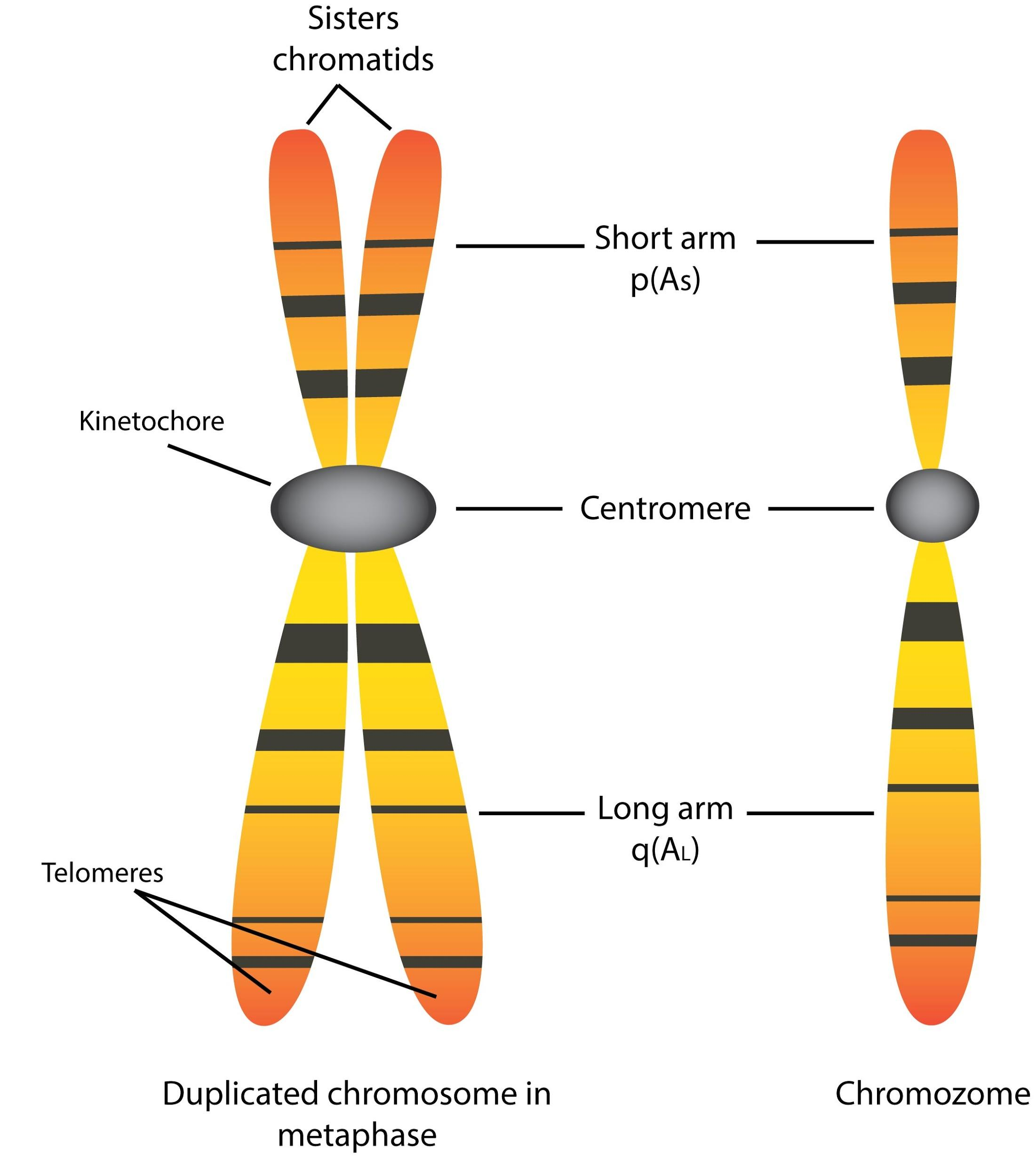
Chromatid is
(a) One half of chromosome
(b) Haploid chromosome
(c) Complete chromosome
(d) Duplicate chromosome
Answer
471.9k+ views
Hint: It is a different form of arrangement of the DNA. They are the main constituent of the chromosome and when present in pairs form a complete structure of the chromosome. It is joined from the middle by a centromere.
Complete step by step answer:
- A chromatid is simply one of the copies of the duplicated chromosome, these chromatids are generally attached to the other copy by a structure called a centromere.
- It is one half of the chromosome.
- These duplicated chromosomes which are joined together by centromeres separate during cell division.
- Centromere consists of specialized proteins called kinetochores at the time of cell division, where spindle fibers attach and they pull sister chromatids apart during cell division.
- A chromosome is a highly coiled structure formed due to the condensation of chromatin fibers. The occurrence of one set of chromosomes implies a haploid condition and two sets of chromosomes imply a diploid condition. The chromosome mainly consists of DNA, the main genetic material which is tightly coiled many times around the protein histone that supports its structure.

- The chromatids pair are generally similar in structure and are known as homozygous chromatids, but they may change due to some mutation and are called a heterozygous chromatid.
- The chromatid may be said to be a sister chromatid or a non- sister chromatid. The sister chromatid is the one that is present adjacent to each other forming a single chromosome and is joined together by a common centromere.
- The non- sister chromatid is the chromatid that is from two chromosomes or formed during the pairing of maternal and paternal chromosomes and leads to the formation of chiasma.
- The sister chromatids during meiosis or mitosis will exchange their genetic information and result in DNA recombination.
So, the correct answer is ‘(a) One half of the chromosome’.
Note: The word chromatid was derived from the Greek word Khromat, meaning color and id. The word chromosome was derived from the Greek word chroma, meaning "color" and soma, meaning "body". They are aware of the strong staining of a particular dye. The term chromosome was coined by the German scientist von Waldeyer- Hartz. Walther Flemming was the scientist who named the term chromatin and also discovered the cell division.
Complete step by step answer:
- A chromatid is simply one of the copies of the duplicated chromosome, these chromatids are generally attached to the other copy by a structure called a centromere.
- It is one half of the chromosome.
- These duplicated chromosomes which are joined together by centromeres separate during cell division.
- Centromere consists of specialized proteins called kinetochores at the time of cell division, where spindle fibers attach and they pull sister chromatids apart during cell division.
- A chromosome is a highly coiled structure formed due to the condensation of chromatin fibers. The occurrence of one set of chromosomes implies a haploid condition and two sets of chromosomes imply a diploid condition. The chromosome mainly consists of DNA, the main genetic material which is tightly coiled many times around the protein histone that supports its structure.

- The chromatids pair are generally similar in structure and are known as homozygous chromatids, but they may change due to some mutation and are called a heterozygous chromatid.
- The chromatid may be said to be a sister chromatid or a non- sister chromatid. The sister chromatid is the one that is present adjacent to each other forming a single chromosome and is joined together by a common centromere.
- The non- sister chromatid is the chromatid that is from two chromosomes or formed during the pairing of maternal and paternal chromosomes and leads to the formation of chiasma.
- The sister chromatids during meiosis or mitosis will exchange their genetic information and result in DNA recombination.
So, the correct answer is ‘(a) One half of the chromosome’.
Note: The word chromatid was derived from the Greek word Khromat, meaning color and id. The word chromosome was derived from the Greek word chroma, meaning "color" and soma, meaning "body". They are aware of the strong staining of a particular dye. The term chromosome was coined by the German scientist von Waldeyer- Hartz. Walther Flemming was the scientist who named the term chromatin and also discovered the cell division.
Recently Updated Pages
The correct geometry and hybridization for XeF4 are class 11 chemistry CBSE

Water softening by Clarks process uses ACalcium bicarbonate class 11 chemistry CBSE

With reference to graphite and diamond which of the class 11 chemistry CBSE

A certain household has consumed 250 units of energy class 11 physics CBSE

The lightest metal known is A beryllium B lithium C class 11 chemistry CBSE

What is the formula mass of the iodine molecule class 11 chemistry CBSE

Trending doubts
The reservoir of dam is called Govind Sagar A Jayakwadi class 11 social science CBSE

What problem did Carter face when he reached the mummy class 11 english CBSE

Proton was discovered by A Thomson B Rutherford C Chadwick class 11 chemistry CBSE

In China rose the flowers are A Zygomorphic epigynous class 11 biology CBSE

What is Environment class 11 chemistry CBSE

Nucleolus is present in which part of the cell class 11 biology CBSE




